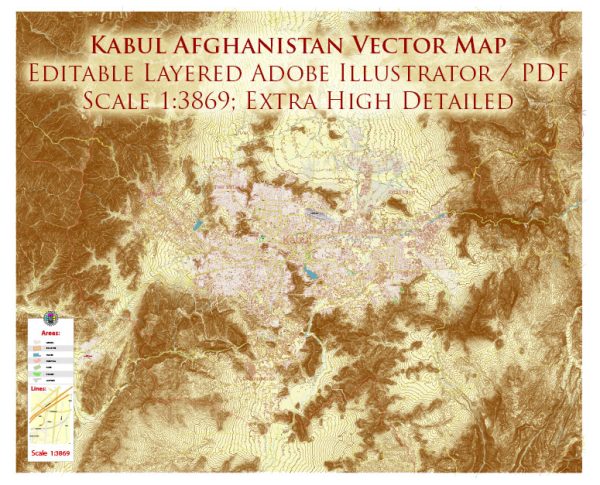Kabul, the capital and largest city of Afghanistan, has a rich history of urban development that spans over many centuries. The city’s history is marked by periods of growth, cultural influence, and unfortunately, periods of conflict and destruction. Here is a brief overview of Kabul’s history of urban development:
- Ancient Origins (3rd Century BCE – 7th Century CE):
- Kabul’s history dates back to ancient times. It is believed to have been founded in the 3rd century BCE by the Persian king, Seleucus I Nicator.
- The city played a significant role as a trade and cultural center along the Silk Road, connecting the Indian subcontinent, Central Asia, and the Middle East.
- Islamic Period (7th Century – 18th Century):
- Kabul became a part of the Islamic Caliphate in the 7th century and subsequently saw the construction of mosques, madrasas, and other Islamic structures.
- During the Ghaznavid and Ghurid periods, Kabul experienced cultural and economic prosperity.
- In the 16th century, the Mughals under Babur, who was originally from Kabul, established the Mughal Empire in India. Kabul became an important administrative center during this time.
- Durrani Empire (18th Century – 19th Century):
- Kabul became the capital of the Durrani Empire in the 18th century under Ahmad Shah Durrani.
- The city’s architecture during this period was influenced by Persian and Central Asian styles.
- 19th Century:
- Kabul faced challenges during the Anglo-Afghan Wars in the 19th century, leading to periods of conflict and destruction.
- Despite the conflicts, Kabul remained an important cultural and political center.
- 20th Century:
- In the 20th century, Kabul experienced modernization efforts and urban development.
- The city saw the construction of new infrastructure, including roads, schools, and government buildings.
- Soviet Occupation and Civil War (1979 – 1996):
- Kabul suffered extensive damage during the Soviet occupation and subsequent civil war. Many historic structures were damaged or destroyed.
- The city’s population swelled with refugees, leading to informal settlements and strained infrastructure.
- Taliban Rule (1996 – 2001):
- During the Taliban rule, Kabul underwent a period of relative stability, but there were restrictions on cultural and artistic expressions.
- Post-2001 Reconstruction:
- Since the fall of the Taliban regime in 2001, efforts have been made to rebuild Kabul and restore its cultural heritage.
- International aid and investment have supported infrastructure projects, including the construction of new buildings, roads, and the restoration of historic sites.
- Contemporary Challenges:
- Kabul faces ongoing challenges due to the security situation, rapid urbanization, and inadequate infrastructure.
- Despite the challenges, the city continues to be a vibrant cultural and economic hub.
The history of Kabul’s urban development reflects the city’s resilience in the face of various challenges and its enduring significance in the region.


 Author: Kirill Shrayber, Ph.D.
Author: Kirill Shrayber, Ph.D.